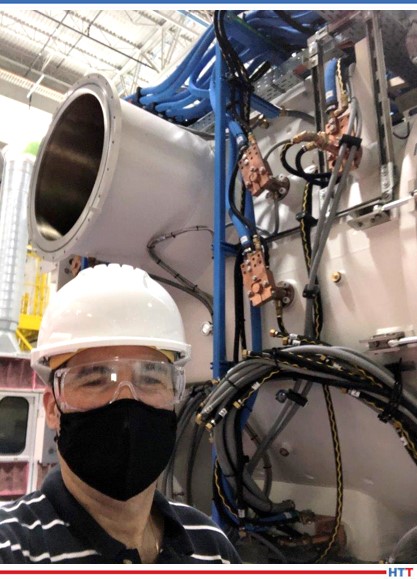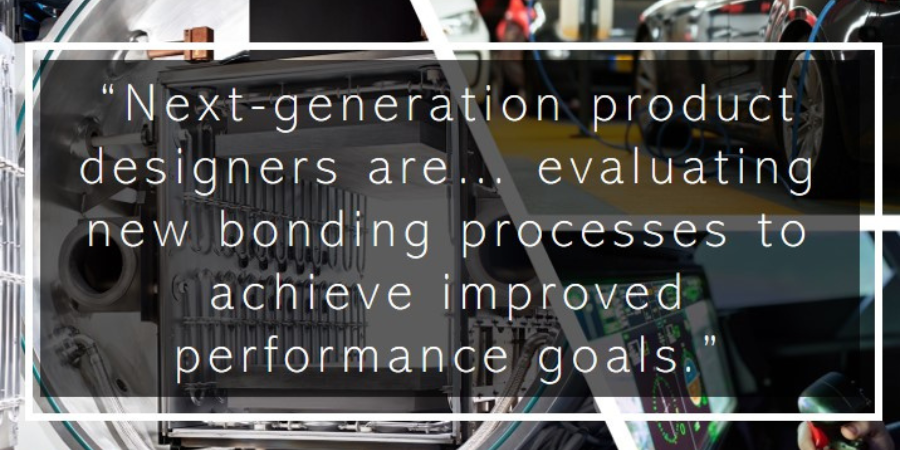![]() With "advances in electric vehicle transportation, semiconductor fabrication, novel material development, and miniaturization, the ‘performance envelope’ continues to broaden." This requires revisiting some tried and true heat treating techniques and their applications.
With "advances in electric vehicle transportation, semiconductor fabrication, novel material development, and miniaturization, the ‘performance envelope’ continues to broaden." This requires revisiting some tried and true heat treating techniques and their applications.
Read on to see what Tom Palamides, senior sales and product manager at PVA TePla America, Inc., has to say about how diffusion bonding may replace brazing for certain applications. Check out other Heat Treat Today original content or Technical Tuesday articles in the search bar to the right.

Source: PVA TePla
As we begin to see the light at the end of the tunnel from the devastating economic shock of the COVID pandemic, engineering companies, heat treaters, and material process engineers must work in unison to adopt refined manufacturing processes to meet the demands of critical component design. Harnessing new tools and techniques allows for real operational enhancements and is an increasing trend across many industries.
Brazing historically has been, and remains, the stalwart technique for joining precision-machined components. However, with advances in electric vehicle transportation, semiconductor fabrication, novel material development, and miniaturization, the “performance envelope” continues to broaden. Two of the most common limitations of brazing are that it is challenging to prevent alloy flow in small diameter micro-channels. When such a part is used in higher temperature operating conditions, the joint can introduce elemental cross-contaminants for ultraclean environments. To this end, diffusion bonding, which uses pressure and relatively low heat (about 50%-90% of the absolute melting point of the parent material) to join similar, or dissimilar materials, holds promise.
If one examines the aerospace, semiconductors, energy, medical devices, and electronic component markets, new and higher performance demands have become the norm. Next-generation product designers are, therefore, evaluating new bonding processes to achieve improved performance goals. Many now view diffusion bonding as the “next leap” for metallic materials processing; it offers several unique advantages for complex geometric structures and materials that can operate under strenuous high-performance conditions.
Solid-state diffusion bonding results from the controlled combination of three (3) key processing parameters: pressure, temperature, and cycle time. The careful balancing of these three parameters promotes bonding at the joining surfaces. The result is a virtually invisible uniform interface, devoid of metallurgical discontinuities and porosity.

Source: PVA TePla
Process engineers have evaluated solid-state diffusion bonding at a research-level for more than fifty years; however, much has changed recently. Building on twenty-five years of successful commercial product solutions, such as aircraft disk brakes and specialized heat exchangers, diffusion bonding is now an “upgraded” process. With advancement in the use of high-strength carbon matrix composites and advanced furnace designs that leverage sophisticated electronics and hydraulic systems controllable to within thousandth-of-an-inch, commercial interest now extends far beyond aerospace and energy.
The most sophisticated global companies in electronic instrumentation and semiconductors view diffusion bonding as the wave of the future. The functional-value that 21st-century diffusion bonding technology now offers is a unique-and-beneficial solution in a class by itself; designers came to this realization after being confronted with component performance issues that could not be resolved by traditional brazing. Materials currently under consideration include pure aluminum, aluminum alloys, stainless steels, and nickel-based alloys as well as any other material, such as coated substrates for power electronics or glass and special material combinations (dissimilar joints).
Today is an exciting time for any engineer who wants to upgrade or produce new and/or higher performance designs, and heat treaters need to be aware of a new process emerging in their midst. It is essential for the heat treater to know the various types of capital equipment and the performance specifications that have and are evolving with the diffusion bonding process. Companies are learning to operate with smarter devices and more intelligent methods. Why not evaluate diffusion bonding to improve productivity, product quality, and material performance for your next-generation products?
About the Author: Thomas Palamides, senior sales and product manager at PVA TePla America, Inc., has a background in materials science and international marketing. He holds two U.S. patents. He is passionate about facilitating a broader understanding of how material processes fundamentally influence design and manufacturing cost, as well as how they improve business.








